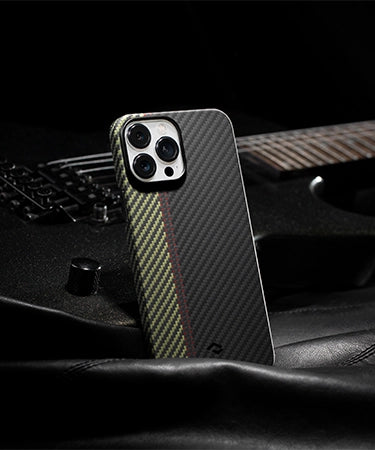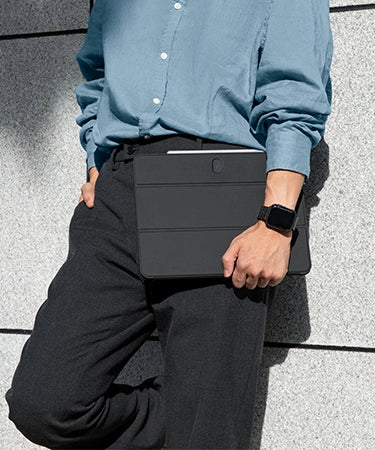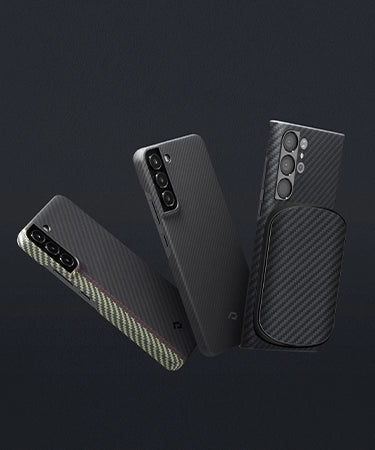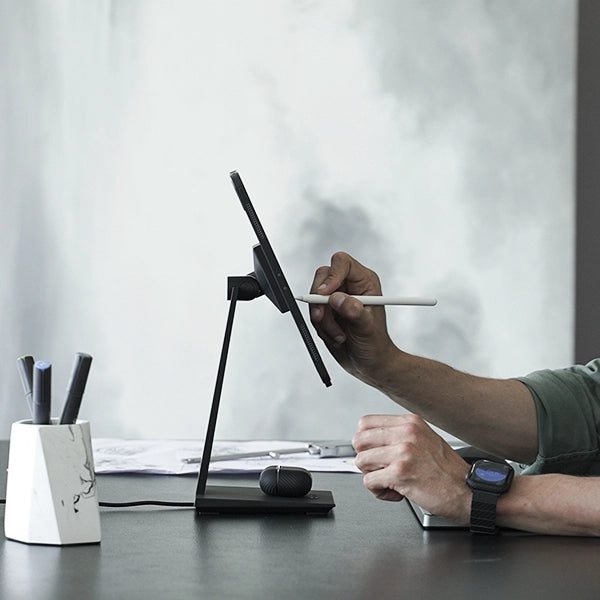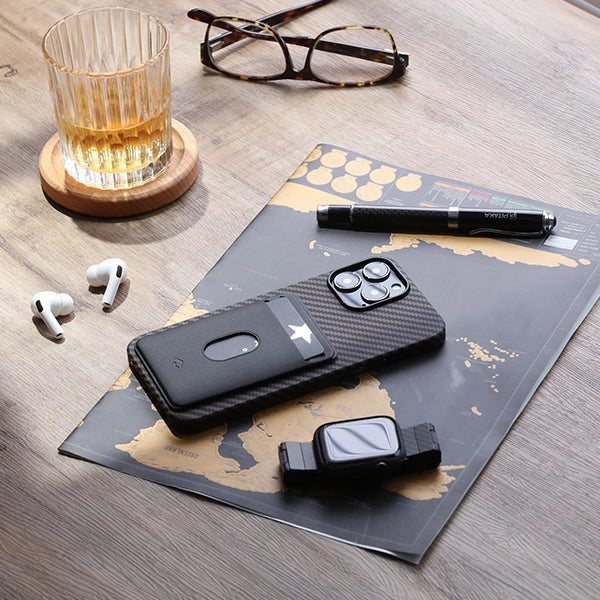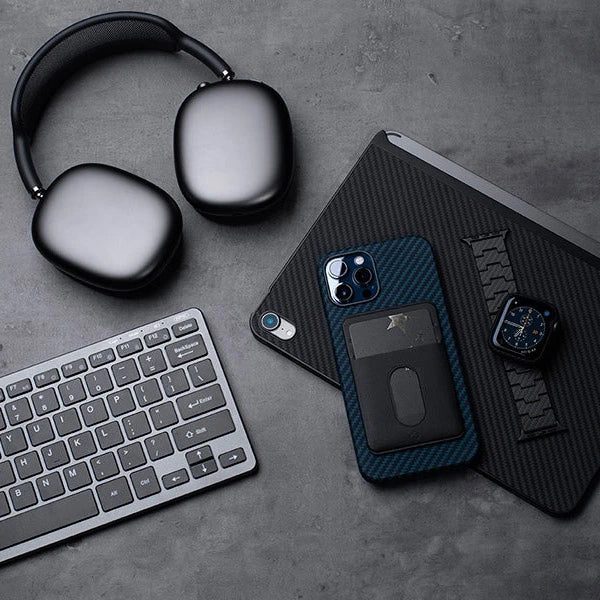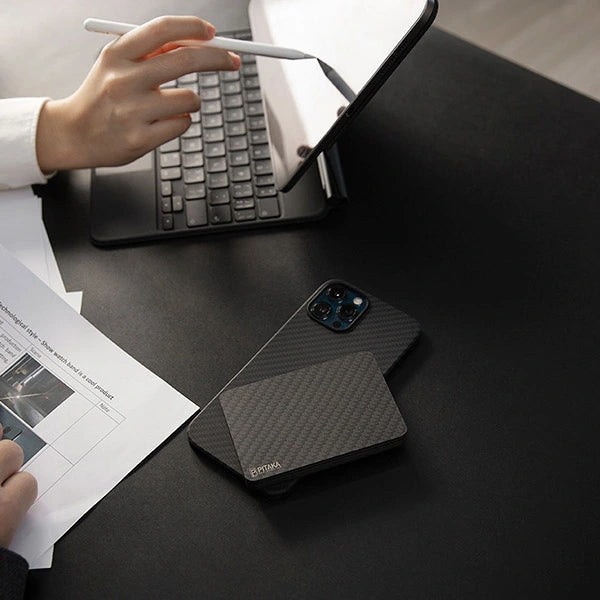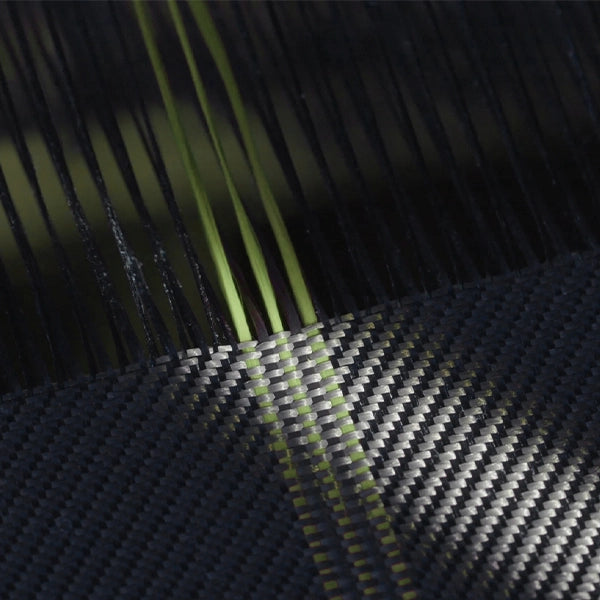Since the iPhone 5, we've been perfecting our phone cases through upgraded techniques, new materials, and even new designs over the years, though some of those changes were not widely noticed.
Now it comes to the iPhone 13 cases, and again, we're doing something new this year – using 3D injection molding labeling to make cases for the iPhone 13 lineup.
Sit back and relax with your favorite drink. We'll learn some technical terms today.
What Is In-Mold Labeling (IML)?
We're not unfamiliar with plastic, the material seen in cars, appliances, consumer electronics, medical machines, and many other things in everyday life. When we use plastic to make the outward appearance of products, we tend to decorate the surface. Traditionally, we add decoration via flame coating/spraying or transfer printing. However, as time goes by, in-mold labeling has gained popularity because it's environmentally friendly and flexible, and it has many other advantages which we will get to that later.
In-mold labeling was first developed by Owens-Illinois, a company specializing in container glass products, and they managed to apply the new technique to shampoo bottles. After a decade's development, the technology is now widely used in all forms of plastic packaging in different industries, including toys, cosmetics, instruments, cars, etc.
In the in-mold labeling process, the pre-printed label wearing decoration is inserted into a mold during the manufacturing process, thus integrating the production and labeling process. The item coming out from the mold is finished with printed parts.
Why Is In-Mold Labeling Popular?
In-mold labeling is an ideal method to decorate consumer and industrial products for the following reasons.
First of all, in-mold labeling is cost-effective compared to traditional decorating techniques such as paint, hot stamping and laser etching. By combining the decoration process with the molding process, fewer molds are needed, and perhaps less labor is required at the production line, and the production time is reduced.
Production is simplified and stabilized. When two procedures are cut down to one, the production becomes more stable because adhesive application problems usually seen in the labeling or decoration operation are eliminated.
Products are made more beautiful. Various and complex decorations are possible due to in-mold labeling technology. We can have label films with different graphic designs infuse with the product itself. And without the label stretching out over the body, the product looks cleaner.
Products are more durable too. During molding, the graphics and labeling are fused into the outer surface of the molded part, coated with thin film that protects the decoration from fading, scratches or dirt. So prints will not peel, and colors will not fade, giving the product a clean, fresh look even after years of usage.
In conclusion, in-mold labeling brings great economic results to companies and great environmental benefits to society. Moreover, it helps bring more high-quality and nice-looking items to end-users. Finally, it allows designers to give their potential full play, thus enriching the market.
Common In-Mold Labeling Methods
There are three kinds of in-mold labeling based on the manufacturing process: blow molding, thermoforming molding, and injection molding.
Blow molding is the forming of a hollow item by blowing a plastic tube in the shape of a mold cavity. The label for decoration is fixed into the cavity wall of the mold and is printed on the surface of the tube when it's blown. This process is mostly used for producing hollow plastic parts such as bottles for various uses.

Thermoforming molding involves forming a heated plastic sheet on the surface of a male or female mold. The pre-printed label is inserted into the mold before the heated plastic sheet stretch around and takes the form of the mold.
Injection molding is great for producing parts in large volumes. It works by injecting molten plastic into the mold where the label is placed upon. This technique is typically used as a mass production process to manufacture thousands of identical items. Products produced by injection molding have lower scrap rates, thus reducing wastage when compared to traditional manufacturing processes.

Source: RNA Automation
Injection molding is the most popular in-mold labeling method, and it's the technology we used to produce iPhone cases. But this year, we challenged ourselves again.
What Is 3D Injection Molding Labeling?
In regular in-mold labeling, the infusion is done at the two-dimensional level or a flat surface. 3D injection-molding labeling, however, is a process of infusing two or more materials at different dimensions in the same mold.
For the first time, PITAKA engineers combined aramid fiber with thermoplastic polyurethane (TPU) in the injection molding machine to produce the protective case for iPhone 13. 3D injection molding labeling technique is more complex than regular in-mold labeling or injection molding, so it costs more. But we decided to do it because the technique will bring us better products, bringing customers a better experience.
The Pro version of the MagEZ Case is the most protective one of PITAKA's phone case series. The protective case is usually composed of different materials and layers. Previously, the front is crafted from aramid fiber, the sides TPU, and the inside microfiber. Take a look at the MagEZ Case Pro for iPhone 11 and iPhone 12.

Thanks to 3D in-mold labeling, for the New MagEZ Case Pro for iPhone 13 series, aramid fiber and TPU are fused together seamlessly at every dimension, so the sides of the case are also covered by aramid fiber to offer greater protection.
Also, the overall aesthetics of the iPhone 13 phone case is improved. The classic fiber weave covers the front and extends to the rims, making the case look more seamless. And aramid fiber on the side panels offers a better grip than TPU as well.

Other than that, the PITAKA iPhone 13 case features MagSafe magnets to work seamlessly with Apple's MagSafe system as well as PITAKA's MagSafe system. We've designed a new wireless charging car mount for the iPhone 13. It securely attaches your iPhone 13 to the car mount for on-the-go rock steady charging no matter the terrain.
Check out our iPhone 13 protective case now.
